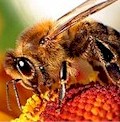The cardinal sin with beekeeping is not using the correct tools and supplies. While rewarding, beekeeping is a hobby that has the potential to be dangerous. But even a beginner can certainly lessen the danger of injury by simply ensuring the right tools are part of their beekeeping supply. Removing the honey from the hive is where most of the supplies will come into use and the rest will be for handling the bees themselves.
Quite an important part of beekeeping is taking precautions to actually ensure that the beekeeper is not injured as they oversee the hive and the colony. This can be achieved in a number of different ways. One is that the beekeeper to simply don a protective suit. This includes a hat with a veil, thick gloves and a beekeeping suit. One of the most vulnerable and sensitive areas of the body is the face. It goes without saying that the face is to be completely covered at all times with a good quality hat and veil when working with bees. A beekeeping suit is normally white in color, is made of a light weight material and will be full length. A bee will experience enormous difficulty attempting to puncture a beekeeping suit and this is exactly what its intended purpose is - to not let the venom through to its wearer. Always use gloves when working with bees. They can be arduous to use sometimes but you'll think twice if you are stung on the hand!
A lot of beekeepers use what's known as a "smoker". Smokers help to keep bees calm and this makes it far easier to work around them. Smokers release smoke to the bees using a range of fuels. These range from twine, hessian, pine needles, burlap, ridged cardboard and rotting wood. You could also try smoke filled aerosol cans, pulped paper or compacted cotton as fuel for smokers. An instinctual feeding mechanism is triggered by the smoke that is released. The resulting behavior from the bees is to begin the necessary preparations in the possibility of having to vacate the hive, just as if a real fire had occurred. The smoke will camouflage the "alarm" pheromone that is discharged into the hive collective by the guard bees when it's perceived that danger is present. While the entire colony is in a confused state, the beekeeper can then seize the opportunity to open the hive and work within its confines without the fear of initiating a defensive reaction from the bees.
It's quite common for beekeepers to supplement the bee's diet with sugar syrup, even though bees are more than capable of foraging for their own food. Doing this will stave off the possibility of starvation during any bad times of the year when the bee's food source is lower than normal and it also acts as a stimulant for the laying of the eggs. The recommended approach for beekeepers to properly feed their colony is by using a feeder, and there are many various types that are available to choose from. For winter, a hive top, a pail or division boards can be used as inside feeders. Bees are very active during the summer months so an entrance feeder is recommended at these times.
The largest element to keeping a beehive is what the colony is actually housed in. Beekeepers use artificial hives to keep their bees in which consists of a wax foundation. This encourages bees to manufacture the the comb in a way that will contribute greatly to a straightforward harvest. The foundation is a slender wax sheet comprising of a cell based hexagonal pattern embossed on both the sides. This enables the bees to exert less effort when constructing the combs.
